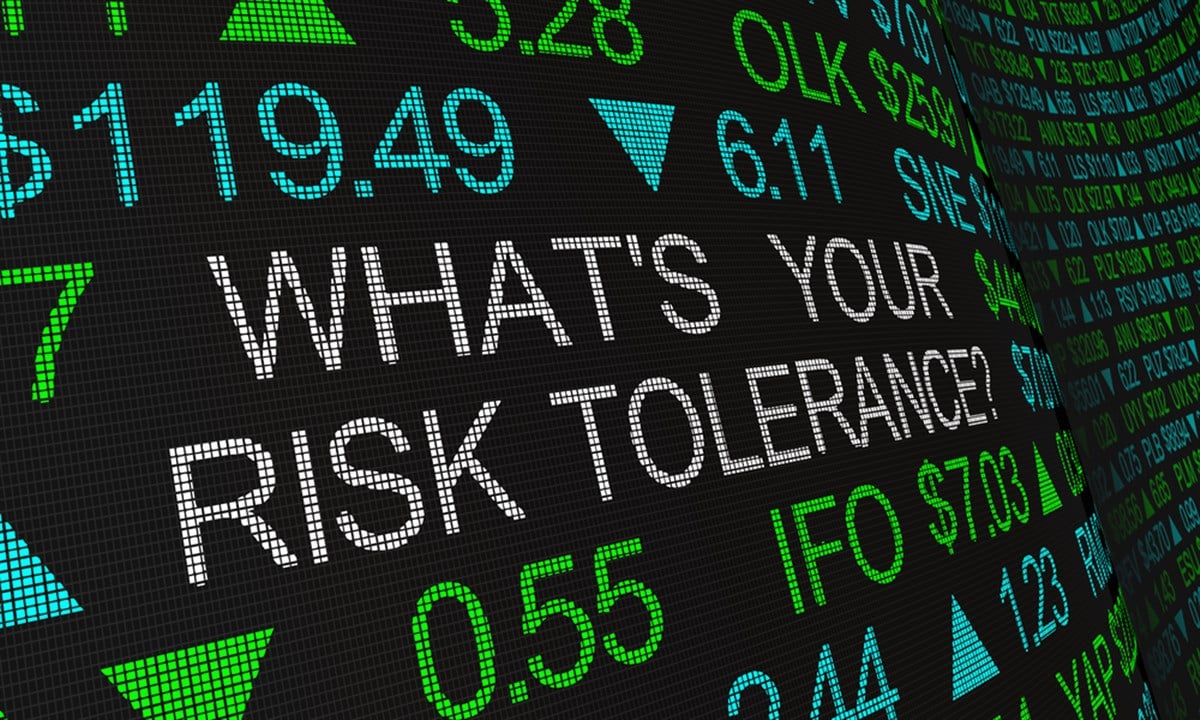Key Points
Risk tolerance measures the risk an investor is willing to take in their portfolio.
Several different factors, such as comfort level and timeframe, can determine investor risk tolerance.
Your risk tolerance isn’t set in stone and can change based on circumstances or life events.
Risk tolerance varies from person to person. Some people have no fear of parachuting out of an airline, while others won’t even ride a rollercoaster at a theme park. Everyone is a combination of their own ideas and experiences, which is why topics like risk tolerance are constantly evolving. Risk can’t be avoided entirely in investments, but the amount of risk we’re exposed to can be modified by concentrating on a few key factors.
Before you invest, it’s essential to understand your risk tolerance. While no one-size-fits-all investment plan exists, specific forces consistently influence our decisions. In this article, we’ll guide you through measuring your personal risk tolerance, explain the factors involved and help you identify the right assets for your risk tolerance level. Get stock market alerts:Sign Up
What Are the Different Types of Risk Tolerance?
All investments carry some risk. Even safe assets, like bonds, index funds or your primary residence, can lose value. Risk tolerance measures how much price volatility you’re willing to withstand on your asset to maximize returns.
Risk-taking can be rewarded, but risky assets can also suffer prolonged drawdowns. Like Goldilocks, you’ll want to adjust the temperature of your portfolio until your asset allocation is just right. Here’s a rudimentary example of 3 different levels of risk tolerance.
Aggressive Risk Tolerance
For those with an aggressive investment risk tolerance, the thrill of high-volatility assets is part of the game. Aggressive portfolios often feature stocks from dynamic sectors like tech or consumer discretionary, and certain market conditions can lead to significant returns. Investors with long time horizons often opt for aggressive portfolios as they can best weather extended drawdowns.
Moderate Risk Tolerance
Moderate investors try to balance their portfolios with risk assets and income-producing instruments. An excellent example is the classic 60/40 portfolio, where an investor puts 60% of the capital into stocks and 40% into bonds.
Conservative Risk Tolerance
Sometimes, preservation is more important than accumulation. Conservative investors often prefer consistency to market-beating returns, so they prefer bank CDs, bonds or dividend-paying stocks. Retirees usually have conservative investment plans to earn steady income-based returns while spending down their nest egg.
How to Determine Your Risk Tolerance
Risk tolerance is a matter of personal preference. Time horizon plays a considerable role but is far from the only important factor. Two investors with similar timeframes may still have drastically different risk tolerance levels depending on their family situation, career or health. You’ll want to consult with an advisor to develop personal risk tolerance guidelines, but here are a few considerations to take into the meeting.
Consider Current Investments and Goals
Why are you investing in the first place? Is it to build a nest egg for retirement or a child’s education, or to save for a house down payment or exotic vacation? Your goals will significantly influence the level of risk you apply to your portfolio. For example, a vacation isn’t necessary, so you might be more comfortable taking risks in that scenario than if you were saving for something more essential like a house or college tuition.
Consider Your Age and Time Horizon
Market timing is tricky, but the time you spend in the market is within your control. If you’re a young investor climbing the career ladder, you have 2 huge advantages: time and physical capital. You have decades to earn income and invest that income aggressively.
According to concepts like time diversification, investing in stocks over long timelines is less risky since the portfolio can be adjusted as the timeframe winds down. Investors in securities like target-date funds have their level of risk automatically toned down as their expected retirement date approaches. Older investors may not be able to afford a risky process since they no longer earn income through their jobs and depend on their investments for living expenses.
Consider Your Personal Comfort Level
Separating emotions from investing is complicated. Can you tolerate an extended drawdown? Are you afraid of pulling money out of risky investments at the worst possible time? Be honest with yourself when considering this factor. Only some investors can tolerate watching their portfolio drop 10-20% quickly, which is often how bear markets materialize. If the idea of losing a big chunk of your capital makes your stomach churn, you might prefer a conservative portfolio, even if you have a long time horizon.
Adjusting Risk Tolerance Over Time
Risk tolerance isn’t fixed; it’s a malleable trait that changes based on personal situations and timelines. This adaptability provides reassurance and flexibility in your investment journey. Age is a good barometer of risk tolerance; younger investors will naturally be able to tolerate more risk than older ones.
However, risk tolerance also changes with income, family dynamics, health and economic environment. An investor with a spouse and 3 children probably won’t have the same comfort with risk as someone the same age with no dependents. Life constantly changes, and keeping up with market headlines can be difficult. Always take time to chat with an advisor if your scenario changes.
Conclusion
Risk tolerance is a tool to determine what assets are ideal for a specific investor’s portfolio. Understanding risk tolerance allows you to construct a portfolio that aligns with your financial goals and comfort levels, making you feel secure and prepared. Aggressive investors with long time horizons can invest in riskier asset classes like individual stocks, while risk-averse investors may prefer bonds or index funds. Several factors go into the risk tolerance equation, such as timeframes, family situations and personal comfort levels. Consider an advisor’s services when deciding to change the makeup of your portfolio.
Make an Informed Investment Strategy with MarketBeat
You can’t escape market risk, but you can learn to mitigate it with the proper tools and research. Consider MarketBeat’s suite of services to stay on top of market headlines, economic data and company earnings reports. Click here to learn more.Before you make your next trade, you’ll want to hear this.MarketBeat keeps track of Wall Street’s top-rated and best performing research analysts and the stocks they recommend to their clients on a daily basis.Our team has identified the five stocks that top analysts are quietly whispering to their clients to buy now before the broader market catches on… and none of the big name stocks were on the list.They believe these five stocks are the five best companies for investors to buy now…See The Five Stocks Here Click the link below and we’ll send you MarketBeat’s list of seven best retirement stocks and why they should be in your portfolio. Get This Free Report

May 29, 2024
Read next
September 2, 2024
Just months ago, Chinese electric vehicle (EV) manufacturer Li Auto Inc. NASDAQ: LI stood out among competitors…
4 min read
July 20, 2024
Stocks took a breather after rallying sharply to start the week. For now, this feels like a normal pullback that…
5 min read
March 6, 2024
Key Points Palantir stock opened trading on March 6, 2024, at just over $26 a share. It’s the highest the…
3 min read
Has the Ban on the Apple Watch Reached a Breaking Point?
January 1, 2024
Key Points The International Trade Commission (ITC) found Apple infringed on two patents owned by Massimo Co. in…
4 min read

